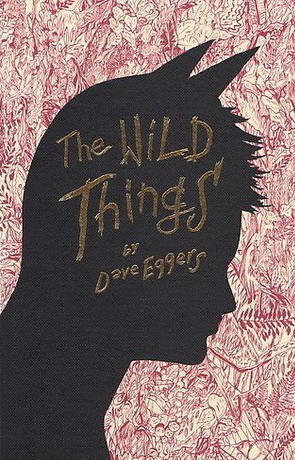Inspiring Young Readers
 posted on 01 Feb 2017
posted on 01 Feb 2017
The Wild Things by Dave Eggers
Every now and then you get rudely reminded that things that ought to work together and make life more joyful just don’t. Think of Bing Crosby and David Bowie for example. Well now you can add Maurice Sendak and Dave Eggers to that list. Giving one of the definitive children’s books of the twentieth century – Where The Wild Things Are – to a skilful and capable novelist and all-round cultural good egg should have been a marriage made in heaven. Instead, I’m sad to report, it’s little more than a well-intentioned mess.
Almost everything that’s great about the Sendak masterpiece is lost in translation by Eggers as he turns brilliant imaginative gold into plodding prose dross. Giving the young and wilful Max a back-story is a strategy full of danger and Egger’s leaps into the pit feet first. Here Max is not just a normal naughty boy, he’s borderline delinquent. The list of his misdemeanours would merit a serious consideration of what professional help this young boy needs.
His escape to the island of the Wild Things is fundamentally compromised by the need to give the monsters identity and personality. The Wild Things are given motivations, relationships and a sort of hierarchy that is meant to enable the reader to make some connections with them but which does something which is probably unintended – it anthropomorphises them and invites you to sympathise. No, no, no. These are monsters for goodness sake – they are meant to be a bit scary even if ultimately Max is their temporary king.
And then, the biggest problem of all. How do you write a rumpus? Sendak’s illustrations invite you to engage in your own version of what the rumpus involves and this allows the ‘fun’ to be timeless. Eggers however has saddled himself with the task of making the rumpus believable in a descriptive way – and boy does it fall completely flat.
I’ve been harsh on this book because I think it was a thoroughly bad idea – as bad as the idea of the film that Eggers also helped to script and which was also a major turkey in my view. Eggers isn’t a bad writer at all but he’s taken on a task that no-one should – trying to improve on something that is as close to perfect as it’s possible to get. Sendak came close to surrendering his sanity and well-being to creating Where The Wild Things Are and he did that using the minimum of words and employing the extraordinary design and illustration skills that only the very best have in their portfolios. What this alchemy produced was a story that’s all about not saying things, allowing the imagination of the reader to be sparked into life and letting them create the world in their own image.
Sadly what Eggers’ enterprise does is to negate all the agency the reader is being allowed to exercise in the original and he replaces it with his own vision - which is not in itself axiomatically a mistake but is heavily dependent on that vision being remarkable and brilliant. Sadly, it isn’t.
Terry Potter
February 2017